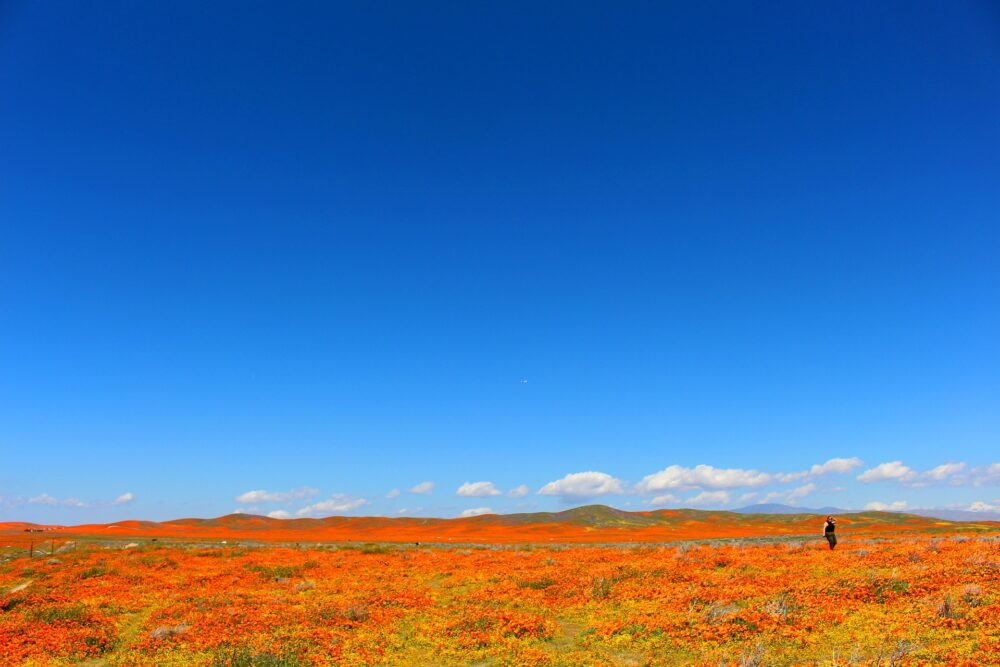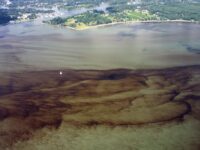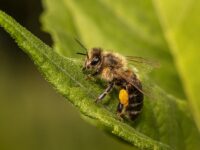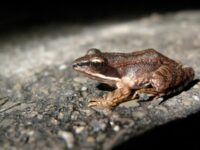Most of the time, the natural phenomena that are visible from space are destructive forces such as hurricanes, volcanoes, and forest fires. But every so often, a beautiful display of flowers illuminates satellite images.
In the springs of 2017 and 2019, the dry hills in southern California exploded into what has become known as a “super bloom,” where thousands of flowers paint the hillsides with vibrant colors in a display that can be seen from space. These super blooms typically occur every 10 years on average and are prompted by winters with high rain and snowfall, leading to abnormally high volumes of wildflower seeds sprouting and blooming in the spring months. The native wildflowers that make their appearance in these displays include orange California poppies, yellow goldfields and desert dandelions, and purple delphinium and lupine.
These super blooms typically occur every 10 years on average and are prompted by winters with high rain and snowfall, leading to abnormally high volumes of wildflower seeds sprouting and blooming in the spring months.
These super bloom events have made tourist attractions out of some of California’s lesser-known protected lands. Parks such as Anza-Borrego Desert State Park and Carrizo Plain National Monument have seen high spikes in visitors during super blooms. The small town of Lake Elsinore, southeast of Los Angeles, saw over 150,000 visitors over one weekend in March 2019 alone. The perception of these super bloom events as rare and iconic sparked the flood of visitors, who used the natural phenomenon as a backdrop for influencer Instagram posts. The super bloom events also help fuel the local economy as visitors to Anza-Borrego State Park account for over $40 million in revenue to the region.
With the anticipated global temperatures on the rise, the reduced snowpack in California threatens the future of this colorful blossom display. As climate change begins to affect desert communities, they will be forced to adapt to the changing conditions of the parks they rely on for local economic support. For now, however, super blooms serve as a reminder that — amongst destruction — nature can also provide beauty.
Human Ecology (2020). DOI: 10.1007/s10745-020-00145-5




